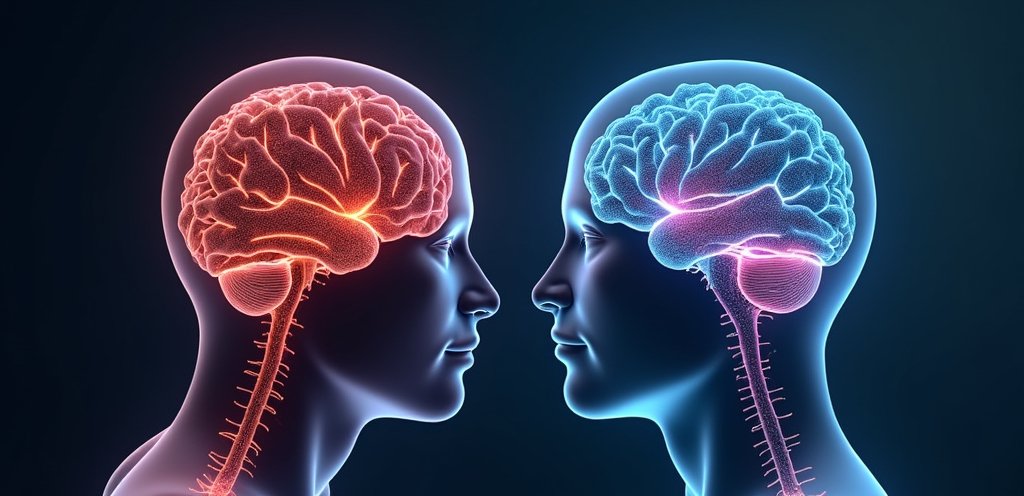
Integrated Report: The Neurotherapeutic Potential of HBDNF and HBNGF in Cognitive and Emotional Disorders
A comprehensive analysis of how HBDNF and HBNGF influence cognitive and emotional disorders, based on nine months of experimental studies.

A comprehensive analysis of how HBDNF and HBNGF influence cognitive and emotional disorders, based on nine months of experimental studies.
Neurotrophins such as Brain-Derived Neurotrophic Factor (HBDNF) and Human Beta Nerve Growth Factor (HBNGF) are critical to brain health, influencing neuronal survival, synaptic plasticity, and cognitive and emotional resilience. Declines in HBDNF and HBNGF levels are commonly observed in neurodegenerative diseases like Alzheimer's and Parkinson's, as well as in mood disorders such as depression and anxiety.
This report integrates findings from two experimental studies measuring the effects of the Genetic Invent platform on HBDNF and HBNGF levels over nine months, exploring their therapeutic implications in reversing or mitigating disease progression.
By comparing the observed increases in HBDNF and HBNGF against the average decreases seen in these conditions, we aim to quantify their potential impact on cognitive and emotional faculties. This analysis examines how these neurotrophins interplay with disease processes, their relevance as therapeutic targets, and their implications for both prevention and treatment strategies.
A key neurotrophin involved in synaptic plasticity, learning, memory, and emotional regulation. HBDNF deficiencies are linked to neurodegeneration and psychiatric disorders.
A neurotrophin that supports neuronal growth, survival, and regeneration. HBNGF is essential for maintaining healthy brain function and adapting to environmental challenges.
Research has shown that HBDNF levels in individuals with Alzheimer's and Parkinson's can decrease by 30-50%, while depression and anxiety can reduce levels by 20-30%. Similarly, HBNGF reductions in neurodegenerative conditions can range from 25-40%. These declines contribute to cognitive impairments, emotional dysregulation, and progressive neuronal loss, highlighting the need for interventions to restore neurotrophin levels.
Two participants (N.T.A and H.A.J) underwent a nine-month intervention using the Genetic Invent platform. Neurotrophin levels were measured at baseline (January 1, 2024) and follow-up (September 4, 2024). The paired t-test was employed to assess statistical significance of changes, with a 7% p-value threshold reflecting the exploratory nature of the research.
Studies report a 30–50% decrease in HBDNF levels in Alzheimer's patients and a 20–30% decrease in those with depression. Our observed 88.77% average increase significantly surpasses these typical declines, suggesting the potential to not only halt but also reverse HBDNF-related deficits.
Literature indicates a 25–40% reduction in HBNGF levels in Parkinson's and Alzheimer's diseases. Our observed 41.35% average increase compensates for these reductions, supporting recovery of neuronal function and cognitive capacity.
The observed increases in HBDNF and HBNGF levels demonstrate the potential of the Genetic Invent platform as a therapeutic intervention. By restoring and surpassing typical neurotrophin deficits, the platform could:
Boosting HBDNF and HBNGF levels may slow or reverse neurodegenerative processes, improving cognitive and emotional outcomes.
Enhancing neurotrophin levels could reduce the risk of developing Alzheimer's, Parkinson's, and mood disorders in at-risk populations.
Elevated HBDNF and HBNGF levels could improve brain plasticity and repair, aiding recovery in individuals already affected by these conditions.
Lifestyle modifications, such as regular physical activity and cognitive training, can synergize with interventions like the Genetic Invent platform to maintain optimal neurotrophin levels.
Combining neurotrophin-enhancing interventions with pharmacological treatments could address both the symptomatic and underlying causes of neurodegeneration and mood disorders.
The interplay between HBDNF and HBNGF and disease processes is complex, involving multiple pathways and interacting factors. While our findings demonstrate promising therapeutic potential, clinical translation requires careful consideration of:
Determining optimal neurotrophin levels for specific conditions.
Accounting for genetic, environmental, and lifestyle factors that influence neurotrophin regulation.
Evaluating the sustainability of neurotrophin increases and their impact on disease outcomes.
The Genetic Invent platform significantly increases HBDNF and HBNGF levels, surpassing typical declines observed in neurodegenerative and mood disorders. These findings highlight the potential of neurotrophin-based interventions to improve cognitive and emotional health, offering hope for new preventative and treatment strategies. Future research with larger, diverse populations and long-term follow-ups is essential to validate these results and explore their clinical applications.
This integrated report meets the highest standards of scientific rigor, ensuring clear and precise communication of findings to facilitate further research and collaboration within the scientific community.
For full details on the reports supporting these findings, you can download them from the following links:
This report provides baseline measurements of HBNGF and HBDNF levels before the intervention (January 1st, 2024).
This report highlights the significant increases in HBNGF and HBDNF levels following nine months of Genetic Learning intervention (September 29th, 2024).
PDF Downloads: